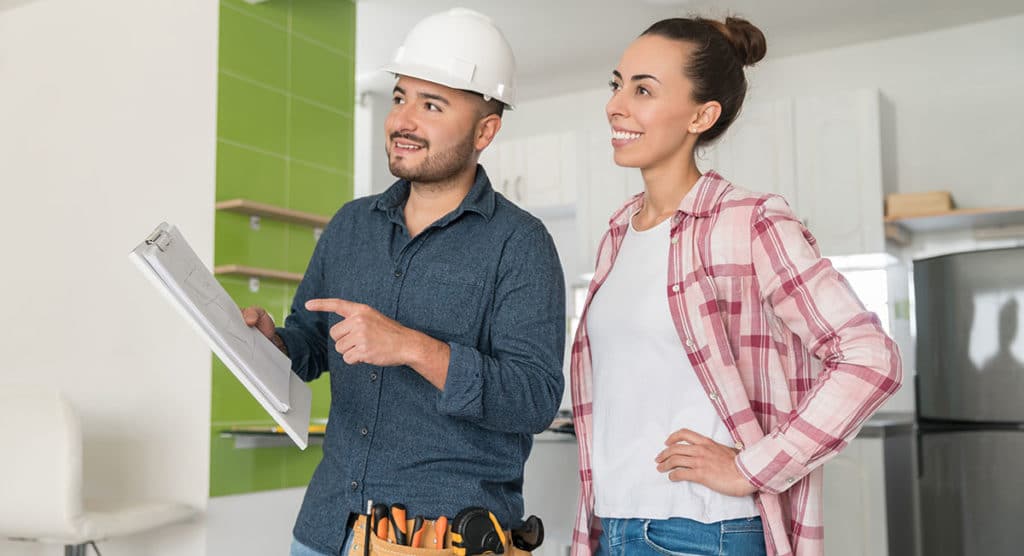How to communicate with your remodeling contractor
A successful relationship with your kitchen or bathroom remodeling contractor begins with communication! How well you communicate with your contractor, or how well they communicate with you, can make or break the success of your remodeling project.
Starting with your selection of a contractor.
As you start to meet with contractors to discuss your upcoming project, take note of how well you connect with them. Are you able to convey your design visions, budgetary concerns, or scheduling restrictions with them easily and effectively? Do they listen actively and ask good, relevant questions? Do they respond to your questions with clear, informative answers? Or do they seem too busy or non-committal to focus on your needs?

Communication is a skill, just as carpentry or tile installation is, and some contractors are better at it than others! The right fit for you will depend on the complexity of your project as well as your level of communication skills. Think of the selection process of your contractor as a test drive for what the ride up ahead will be like.
As you and your contractor begin to get down to specifics on your project, you can dramatically speed up the process by providing sketches, photos, or web links of designs or products that you are interested in. Physical samples of materials also are extremely helpful. They say a picture is worth a thousand words…They are right!
Another area where communication is key is when a client purchases appliances, fixtures, or other materials for installation by their contractor. You must provide your contractor with all the specifications and installation instructions to ensure that there are no conflicts or scope of work gaps. For example, if a client decides to purchase a built-in microwave oven, the contractor will need to ensure the cabinet will be sized properly, has proper venting and power, and has a trim cover plate or some other finish detail. You must also specify when the items will be delivered. This will avoid the appliances being delivered while they are trying to hang the drywall.
Going to Contract.
This is where written communication rules! As with all communication, it is a two-way street. You want to make sure that the following are defined in writing in your contract agreement:
- Scope of work. This should define all areas to be affected, all materials involved, and an outline of the agreed-upon completed product/design. Ideally, this is achieved through the creation of plans and specifications. However, on some projects, the size of the job does not warrant elaborate documents, and a combination of simple drawings and written explanations will suffice.
- Items not included. This area of your contract is as important as what is included in the scope of work. This area addresses what costs or work are expressly not included in the current contract.
- Contract Cost and Schedule of Payments
- Schedule

Day-to-Day Communication During Construction.
Stay engaged with your contractor during the construction phase. Ask questions, give feedback. A Frequent dialogue will help keep things on track. If the contractor designates a superintendent or foreman to manage your project, communicate daily needs directly with them. That is where close coordination takes place! If for any reason a larger concern arises, such as scope issues, cost issues, change orders, or quality control issues, don’t hesitate to pick up the phone and call the office for help.
A quick word on the different methods of communication:
- Texting. This can be useful and convenient for some of the simple, straightforward exchanges, like “will be there at 2pm” or “the paint color is SW1496.” But texting is very inefficient where a two-way conversation is needed, such as “Where are the can light located in the kitchen?”
- Phone. Verbal communication is essential for a successful project. It is easier to provide detail and respond to questions during phone calls. Don’t be shy about picking up the phone!
- Face-to-Face Meeting. In-person meetings are in my view the best method for thorough and effective communication. There is nothing like looking someone in the eye to covey a sense of import or looking at a drawing or detail together pointing out details.
- Emails/In Writing. Some things should always be put in writing, including pricing or cost changes, schedule changes, issues regarding major scope changes, or concerns about serious quality control issues.
Keep in mind that nowadays everyone is busy and some folks respond to certain methods of communications more quickly than others. The above are just suggestions. You will have to figure which method will work best for your project team. You may even ask your contractor at the start, “How do I best reach you?”
At Calusa Kitchen and Bath, we pride ourselves on our emphasis on communication and on creating that efficiently functioning team that will ensure your project is a success!
Please feel free to contact us for assistance on any upcoming project you may have! Contact us today!

